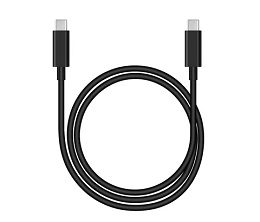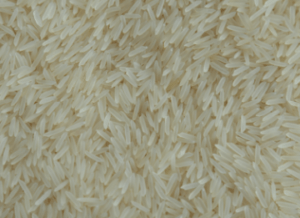In today’s world, where electrical and electronic devices dominate both professional and personal spaces, choosing the right type of power cord is more important than ever. Two primary types of cords are widely used—curly cords (also known as retractile cords) and straight cords. Each type has distinct advantages and is suited for specific applications. But how do you decide which one is best for your setup?
What Are Curly Cords?
Curly cords, also known as retractile cords, are power or signal cables designed with a coiled shape. These cords can extend and retract, making them highly flexible and space-efficient. They are commonly used in environments where mobility and flexibility are essential.
Key Benefits of Curly Cords
- Space-saving design – The retractable nature of curly cords prevents tangling and clutter, making them ideal for compact workspaces.
- Enhanced durability – These cords experience less stress because they retract when not in use, reducing wear and tear.
- Improved mobility – Their stretchability makes them useful in dynamic environments where movement is frequent.
- Safety features – Curly cords reduce tripping hazards by staying coiled when not extended.
- Aesthetic appeal – They maintain a neat and organized appearance, making them preferable for professional setups.
Common Applications of Curly Cords
Curly cords are found in various industries and applications, such as:
- Medical equipment – Used in hospital-grade cords for patient monitoring systems.
- Telecommunications – Found in telephone handsets and headsets for easy mobility.
- Automotive industry – Used in vehicle diagnostics and communication systems.
- Industrial machinery – Employed in robotic arms and assembly lines where flexibility is crucial.
- Retail and POS systems – Helps prevent cable clutter at checkout counters.
What Are Straight Cords?
Straight cords are traditional cables with a linear structure. Unlike curly cords, they do not retract and remain at a fixed length. These cords are the most commonly used type in households and industries due to their simplicity and versatility.
Key Benefits of Straight Cords
- Ease of use – Straight cords do not require any stretching or retracting, making them convenient for static applications.
- Higher power capacity – Generally, straight cords can handle higher voltages, making them suitable for heavy-duty power applications.
- Cost-effective – They are usually more affordable to produce and purchase than retractile cords.
- Longer lifespan – With fewer mechanical stress points, straight cords often last longer than curly cords.
- Universal compatibility – Widely used for household appliances, computers, and industrial equipment.
Common Applications of Straight Cords
Straight cords are commonly used in:
- Home appliances – Used in televisions, refrigerators, and microwaves.
- Office equipment – Ideal for computers, printers, and networking devices.
- Heavy-duty machinery – Common in construction and industrial tools that require a stable power supply.
- Entertainment industry – Used in stage lighting, sound systems, and broadcasting equipment.
- Power extensions – Often found in extension cords and detachable cord sets.
Key Differences Between Curly Cords and Straight Cords
Curly cords and straight cords differ mainly in design and functionality. Curly cords are coiled and retractable, allowing flexibility and space efficiency, making them ideal for dynamic environments like hospitals and industrial setups. They extend and retract as needed, reducing tangling and improving mobility. Straight cords, on the other hand, remain fixed in length, making them suitable for stationary applications such as homes and offices.
While curly cords experience less mechanical stress and last longer in flexible applications, straight cords can handle higher power loads and are more cost-effective. Curly cords also enhance safety by reducing tripping hazards, whereas straight cords require proper management to prevent clutter. Choosing the right cord depends on mobility needs, power requirements, and space availability.
How to Choose the Right Cord for Your Needs
Selecting between curly and straight cords depends on several factors that influence functionality, safety, and convenience. Understanding these factors will help you choose the right cord for your specific needs.
Usage Environment
If your setup requires frequent movement, curly cords are the ideal choice as they provide flexibility without tangling. On the other hand, if the equipment remains stationary, straight cords are better suited as they offer improved power efficiency and a stable connection.
Space Availability
For those dealing with limited space, curly cords help keep cables organized and prevent clutter. If space is not a constraint, straight cords offer a simpler solution without the need for additional cable management.
Safety Considerations
In areas with high foot traffic, curly cords can reduce tripping hazards as they retract when not in use. However, for fixed installations where movement is minimal, straight cords provide a more stable and reliable power connection.
Power Requirements
Devices with high power loads function best with straight cords, as they minimize resistance and ensure efficient power delivery. If you require a flexible connection with lower power consumption, curly cords offer an effective alternative.
Aesthetic and Organizational Needs
For a clean and organized workspace, curly cords help manage clutter and maintain a tidy setup. However, if cable organization is not a concern, straight cords can serve as a straightforward and practical option.
Future Trends in Cord Design
With technological advancements, both curly and straight cords are evolving to meet modern needs.
- Smart cords – Power cords with integrated surge protection and IoT connectivity for enhanced functionality.
- Eco-friendly materials – Sustainable and biodegradable materials are being incorporated into cord manufacturing.
- Increased durability – Improved materials ensure longer-lasting cords that resist wear and tear.
- Customizable lengths – Hybrid solutions are emerging, combining the benefits of both curly and straight cords for greater flexibility.
Which One is Better?
There is no universal answer when choosing between curly and straight cords. The best choice depends on your specific needs:
- Choose Curly Cords if you require flexibility, space efficiency, and mobility.
- Choose Straight Cords if you need a cost-effective, high-power, and stable connection.
Looking for the perfect power cord for your setup? Whether you need flexibility with curly cords or stability with straight cords, High Tech Cords is the best option.












